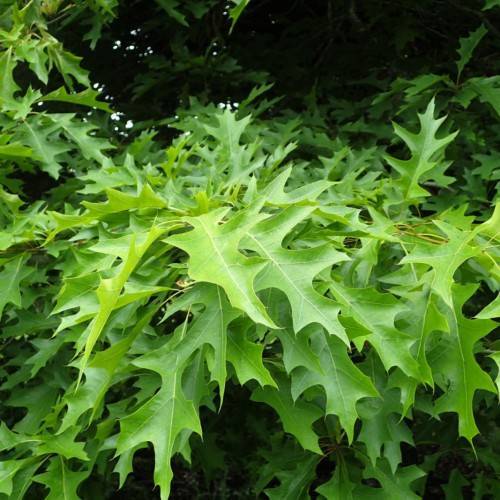
Texas red oak
Quercus texana
Cycle:
Perennial
Watering:
Average
Hardiness Zone:
6 - 9
Flowers:
Flowers In Spring
Sun:
Full sun
Leaf:
Yes
Growth Rate:
High
Maintenance:
Low
watering
Texas red oaks should be watered deeply and infrequently. During the spring and summer, water the tree thoroughly every 2 to 3 weeks, allowing the soil to dry out between waterings. In the fall, reduce watering frequency to once a month. In winter, with the reduced sunlight and lower temperatures, the tree will require less water and can be watered just once every few months. Water slowly and deeply, penetrating the root zone of the tree an inch or 2 with each watering. Clay soils may need additional water to soak down deeper. Make sure to stop watering when runoff begins.
sunlight
In general, Texas red oaks (Quercus texana) need full to partial sun to grow their best. Full sun is ideal for morning and mid-day sun when the rays are the strongest since it helps with photosynthesis and can provide a protective barrier against any extreme weather. This species can tolerate more intense afternoon sunlight for short periods of time but should not be in the sun all day long. This tree should receive 6 to 8 hours of direct sunlight per day for optimum growth, with higher amounts in young trees and younger saplings.
pruning
Texas red oak should be pruned in late winter or early spring, when they are dormant. Use sharp, clean pruning shears to remove any dead, dying, diseased, crossing, and hazardous branches. Small branches can be pruned back to larger limbs. Avoid removing more than 25-30% of the canopy when pruning trees. Doing so can leave the tree vulnerable to wind and sun damage. Thinning out branches can improve air circulation and help the tree remain healthy. Minor adjustments to the crown can also help the tree look neat and balanced. When pruning, avoid removing limbs that have grown out from the main trunk with a crotch angle of 45 degrees or more; these limbs are generally more stable and resist wind damage better.
